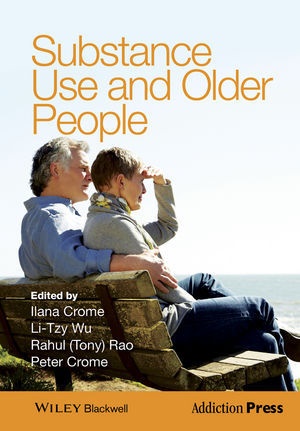Ulteriori informazioni
The only titlededicated to the neglected, yet growing, problem of substance use and abuse in this rapidly increasing patient population.
Sommario
Contributors xvii
Foreword xxi
Introduction xxiv
List of Abbreviations xxvi
Section 1 Legal and ethical aspects of care for older people with substance misuse 1
1 Negotiating capacity and consent in substance misuse 3
Kritika Samsi
Introduction 3
Substance abuse and capacity 3
Mental capacity legislation 4
Mental Capacity Act 2005 4
Capacity assessment 5
Capacity and unwise decisions 6
Consent, barriers to decision making and substituted decision making 6
Best interest decisions 8
Independent decision makers 8
Conclusion 9
References 9
2 Elder abuse 11
Jill Manthorpe
Introduction 11
Defining elder abuse 11
Main reviews 12
Alcohol and substance misuse risk factors 12
Risk factors among older people 13
The effects of elder abuse 14
Discussion 15
Conclusions and next steps 15
References 16
3 The United States perspective 18
Cynthia M.A. Geppert and Peter J. Taylor
The ageing of the baby boomers and its impact on substance abuse 18
Ethical and legal aspects of substance misuse in older adults 19
Confidentiality 19
Informed consent 20
Capacity 21
Coercion 24
Conclusion 25
References 25
4 The European perspective 27
Abdi Sanati and Mohammed Abou-Saleh
Introduction 27
Use and possession 28
Crime 28
European Convention of Human Rights 28
Delivering services for the elderly with substance misuse - ethical aspects 29
Research and development 30
Policy making 31
Some differences between Europe and the USA 31
Ethical issues regarding treatment 32
Stigma 32
Underprescribing controlled drugs 32
Summary 33
References 34
5 Clinical medicine and substance misuse: research, assessments and treatment 35
Amit Arora, Andrew O'Neill, Peter Crome and Finbarr C. Martin
Introduction 35
Why is clinical medicine important? 36
Identification 37
The health effects of substance abuse 39
Challenges for the future 46
Research 47
Identification tools 47
Training and support 48
Conclusions 49
References 49
Section 2 Epidemiology and demography 57
6 Cigarette smoking among adults aged 45 and older in the United States, 2002-2011 59
Shanta R. Dube and Li-Tzy Wu
Introduction 59
Evaluation methodology 61
Results 62
Sociodemographic characteristics of older adults: 2002 versus 2011 62
National trend in current smoking prevalence: 2002-2011 65
Current smoking prevalence by socioeconomic status: 2002 versus 2011 66
Adjusted odds ratios of correlates of current smoking: 2002 versus 2011 66
Discussion 71
Conclusion 72
References 73
7 Epidemiology and demography of alcohol and the older person 75
Stephan Arndt and Susan K. Schultz
Introduction 75
Main reviews 76
Epidemiological estimates of prevalence of alcohol use 76
Estimates of alcohol problems based on amount of drinking 76
Importance of threshold selection for defining problem use 80
Estimating problem use from survey samples 80
Summary of epidemiological estimates 81
Specific problematic drinking behaviours: binge drinking 81
Diagnoses of abuse or
Info autore
Ilana Crome, Emeritus Professor of Addiction Psychiatry, Keele University, Keele, UK; Honorary Consultant Psychiatrist, South Staffordshire and Shropshire Healthcare NHS Foundation Trust, Stafford, UK; Honorary Professor, Queen Mary University of London, London, UK; Senior Research Fellow, Imperial College, London, UK.
Li-Tzy Wu, Professor of Psychiatry, Department of Psychiatry and Behavioral Sciences, School of Medicine, Duke University Medical Center, Durham, NC, USA.
Rahul (Tony) Rao, Visiting Researcher, Department of Old Age Psychiatry, Institute of Psychiatry, London, UK and Lead for Dual Diagnosis, Mental Health of Older Adults and Dementia Clinical Academic Group, South London and Maudsley NHS Foundation Trust, UK.
Peter Crome, Honorary Professor, Department of Primary Care and Population Health, University College London, London, UK; Emeritus Professor of Geriatric Medicine, Keele University, Keele, UK.
Riassunto
Substance use and addiction is an increasing problem amongst older people. The identification of this problem is often more difficult in older patients and is frequently missed, particularly in the primary care context and in emergency departments. This book shows how to recognise and treat substance problems in older patients.

